Since the beginning of history there have been Berbers in North Africa end they were already well established when the Phoenicians made their first incursions in 1200 BC. Their origins are uncertain but thought to be Euro-Asiatic, The generic name Berbers, was imposed on them by the Arabs meaning those who were not Arabs.
Sanhaja, Masmoda, and Zenata are the three tribes constituting the Berbers .
The Sanhaja, from which sprang the Almoravide dynasty (the founders of Marrakesh) were nomads who in the 11C conquered the desert and much of the region to the south of it for Islam; the Masmouda were quiet farming people who lived in the north and west and in the High and Anti Atlas mountains and it was they who gave rise (from out Tin Mal , S of Marrakesh to the Almohade Dynasty which displaced the Almoravides; the Zenata a sub-group of which the - Beni Marin- swept in from the empty region between the Tafilalet and Algeria to become the great Merinide dynasty, were tough, horse-riding nomads of the cold high plateaux of the interior.
Joined to the Arabs only by Islam, the Berhers have always held themselves proudly separate in all other matters, especially in the rural and mountain areas. There is no standard form of Berber language since each tribal group has always used its own version, and there is no recognized Berber script or literature. Their strongest form of self-expression is music and dancing, which is rhythmic but with little harmony, compelling, loud and often quite intoxicating.
The Phoenicians and Carthaginians:
The first invaders are believed to have been the Phoenicians, coming from the land known then as Caanan in the Eastern Mediterranean in the 12C BC. Gradually they established trading posts along the north coast of Africa and traces at their occupation have been found at Lixus (Liks), which was probably the earliest, Tangier (Tangis)Mellilia (Russadir) Chellah part of Rahat and Tamuda (near Tetouan). These traces are usually in the form of fish-salting factories and are often heavily overlaid by Roman remains. The Phoenicians were essentially a maritime people, not interested in conquering or colonizing, and paying scant attention to he primitive berber tribes and poor agricultural land of the interior; therefore, their colonies were little more than enclaves along the coast, separated by great open spaces of wasteland which they did not need. Their main center of influence was Carthage (Tunisia). When Carthage became an independent state, the more civilized Carthaginians arrived and turned the north coast settlements into prosperous towns:they are known to have developed the fish salting and preserving into quite a major industry and their anchovy paste, called "garum" was widely exported. They also grew wheat and probably introduced the grape.
The Carthaginians exercised a considerable cultural influence on the Berbers even long after the Sack of Carthage in 146 BC; indeed, it probably increased at that time as hundreds of Carthagians fled westwards and took refuge from the Romans in the friendly enclaves along the coast .
The Romans:
After they had taken Carthage, the Romans moved westwards into the Berber kingdoms of Mauritania and Numidia(Algeria now) which became part of the Roman Empire. In 13 BC the Emperor Octavius granted the kingdom of Mauritania to the young Berber prince, Juba, son of Juba I of Numidia who had committed suicide 13 years earlier after the defeat by the Romans at the battle of Thapsus. In 25 8(2 they added the whole of Numidia to his realm. Educated in Rome and married to the daughter of Mark Antony and Cleopatra, known as Cleopatra -Stlene, hts pedigree was unpeccabte dnd he ruled wisely, probably living in Volubilis. This had already become a h3erher town of sonic statiding betore the Rornans arrived, due in part to the natural fertility of the region surrounding it and in part to the te~ching of the Carthaginians enabling the Berbers to get the best out ol the land.
The next 400 years formed Morocco ‘s Dark Age and very little is known about this period. The Vandals and Goths who were sweeping through Spain may have touched the northern tip of Morocco on their way eastwards to Carthage but there are no traces that they have stayed. The Berbers in the mountains and the desert continued life much as before. The Romnanised, part-Christian, Berber Mauritanians of the cities of Volubilis, Sala Colonia,(Chella) Tingis and others held on to their mixed cultural heritage and maintained a degree of civilization, as evidenced by one or two Latin inscriptions, found in several places, which date from as late as the mid 7C. But the weak and divided nature of the country was to prove no match at all for the next wave of invaders.
ISLAM
The Idrissides.
By the 7C AD the Arabs were in full expansion. They were inspired primarily by their fierce desire to spread their own religion of Islam throughout the World. but they were doubtless particularly attracted to North Africa by the endless stretches of desert sand which were to them like home. It was in 670 that the first Arab invasions of the North African coastal plain took place under Oqba Ben Nafi, commander of the Umayed dynasty in Damascus.
He is best known for having founded the city of Kairwan (S of Tunis) and for having built the first ever mosque in North Africa, He swept with his army into what is now Morocco in the year 683. Which he called this Maghreb al Aqsa or farthest West
When a second Ummayed leader, Musa lbn Nouasser, arrived in 703,the Berbers were not unwilling to participate in the Islamic expansion into southern Spain and into the more southerly areas of Morocco, However, the progress of Islam remained patchy and small enclaves of Christians still existed in the interior though many fled to Spain). This lack of national unity persisted until the arrival of ldriss Ben Abdallah, a descendant of the prophet Mohammed, in 788. There are very few original Arab sources available for reference about this early period but that which is most frequently cited by historians is the Raoud El Kartas, a chronicle by the 13C writer from Fez, Ibn Abi-Zar-El-fasi: from this we learn that ldriss Ben Abdallah fled into Egypt from the Abbasides .He arrived by way of Kairwan, first in Tangier and then in the former Roman city of Volubilis where was received by Berbers already fully converted to Islam by the earlier Arab arrivals. The Berbers chief proclaimed Idriss King and pledged the support of his own and neighboring tribes. It seems that the arrival of an assured leader who would guide the country out of the spiritual uncertainties which had increased since the death of Oqba ben Nafi was welcome. Idriss II was born after his father’s death and was educated and prepared for his awesome task. He became King at the age of 12, in 804.
He founded Fez which in his time was well prospered. In 818, 8000 Arab families arrived after being expelled by Christians from the Emirate of Cordoba in Spain. Seven years 2000 families came from Kairwan. These ‘refugies’ were welcomed and installed, respectively, on the right and left banks of the river which divides the town. It was very largely as a result of the of these people, with their refinements and skills, that Fez became a great spiritual and intellectual center whose influence very much reached to the far north of the country and, later, beyond. Idriss II who died in 828In Morocco came the next dynasty, from the south The Almoravides.
They were camel-riding Berber of the Sanhaja group of tribes, to whom cultivation of the soil was unknown. For a century or more they Have been conquering and converting to Islam the black countries of the Sahara, inspired by their search for the source of gold which had been flowing into Morocco from somewhere in the region of the Niger river.
The campaigns fought by the Almoravides were violent and successful and they soon controlled the whole of the south, under the leadership of Ibn Tachafine ( the founder of Marrakech in 1062, along with Al Koutoubia Mosque). Much of Spain became part of the Almoravide empire. A period of peace and prosperity followed, enriched by the refined culture of the Andalucian courts to which had been added a healthy dose of Berber virility and discipline.
The Almohades
A new power was emerging. The Almohades were Masmoda berbers from the high and the Atlas mountains .their leader, Mohamed Ibn Toumart, was a man of extarordinary power. The foundation of his doctorine was absolute unity with God, from which stemmed the name of Mouwahhidine, meaning unitarian.
Yacoub Al Mansour was a great statesman. The whole country prospered at his reign: spiritually, intellectually, economically and architecturally. Marrakesh was still the capital. Fez flowered as never before, and the end of the 12C is generally regarded as an apogée in Morocco’s history.
The Merinides:
The Beni Marin were a tribe of Nomadic Zenata Berbers who came from an area between Taza and Algeria.
The policy of the Merinides in running the affairs of Morocco was enlightened they the first Moroccans to introduce a simple form of civil service. They were also the first to introduce the Mellah, or Jewish quarters in all major tows, so that the Jewish could live secure and unmolested. The Merinides were also the first to introduce the concept of Medersa(originated from Baghdad and later on introduced to Egypt). Fez is liberally scattered with fine examples within easy walking distance of the Karawiyine. Sultan Abu Inan built the Bou Inania Medersa in Fez.
The Merinide Soltans surrounded themselves with scholars who could lecture not only about Koran but also about science and law , poetry and geography. The well-known traveller Ibn Batuta( 1304-78) was an honored member of the court of Abou Inan who gave him a secretary to write down stories of his travels as in the black Sea and Tambouktoo. Ibn Khaldoun, the 14 C historian and a Spanish Muslim spent many years as adviser and close associate of Merinide Sultans.
When the dynasty was feebled, Spain and Portugal were turning eyes towards Morocco .At that time, there was another ruler, Ibn Wattas, who came from Asilah to Fez. When he left Asilah, the Portugueuse invaded Asilah and took many family membersof Ibn Wattas and 5000 people as slaves, then Ibn Wattas signed a treaty with Portugal which allowed the portugueuse to invade Asilah, Tangier , Essaouira(Mogador)Mazagan (El Jadida) Zemmour, Safi and Agadir and Ceuta.
So, for a time, almost the entire west coast of Morocco became a seperate Portugueuse colony.
The Saadians
Were decsendants from the prophet Mohamed. They originally came from Arabiain the 12C, and settled in the valley of the Draa in the South of Morocco. They moved to Fez and were easily given power by the Wattasides. In the 16 C, they rebuilt the town of Taroudant as their capital.
During the Saadians’reign, the portugueuse had always dreamt of regaining power in the Moroccan territories. King Sebastian who was asked helped from one of the sultans nephews, landed in Asilah with a massive force of soldiers, there followed a memorable battle in 1578 at Ksar Kbir. The battle was known as the battle of the Three Kings, in which the portugueuse army was defeated, and in which King Sebastian, the Pretender and the Sultan Abd El Malik died.
Glorious in their victory, the Saadians under the reign of Ahmed Saadi(1578-1603) settled down in Fez. The Badi Palace and the Ethereal Mausoleum ( les tombeux Saadians) in Marrakesh are proofs of the wealth of Saadians.
The Alaouites
They were also decsended from the prophet Mohamed. They had arrived from Arabia some three ceunturies earlier to settle near Rissani in the Tafilalet region in the south.( They are referred to as Filali). Unlike preceding dynasties they did not move and seize power but were formally invited by the people of Fez to come to the capital and take over the throne of Morocco.
The first Alaouite ruler ,Moulay Rachid, reigned in 1666. He restored order with a firm hand, revived the life of all mosques and drove out all the pretenders. Under the reign of Moulay Ismael( 1672-1727) Morocco was made again a great country.He exchanged ambassadorts with many leading Powers. Meknes was chosen by Moulay Ismael as the imperial city which he made his capital. Today, the miles of ruined walls, palaces and stables bear witness to his energy and ambition and also to the scale of his success.
In 1757, another wise and strong Alaouite ruler came to the throne. He was Mohamed ben Abdellah. Hebuilt the city of Essaouira and invited the English, the French, and the jewish people to settle and to trade there.
Moulay el hassan acceded to the throne in 1873. He had the task of pacifying the tribes and was the first monarch to enter the wild Souss Area, where the tribes never acknowledged the authority of the state.
During his reign, the European governments suggested ways of reforming administration , such as fixed salaries, civil servants and a more structured method tax collection.
Attacks on foreigners were frequent and the tribes took power into their own hands. At that time, the French occupied Morocco, The Spaniards, for historical reasons, insisted on sharing the influence on Morocco. In 1906, the Conference of Algeciras( in which 30 nations were present) took place and had the effect of internationalizing the whole affair. Tangier was an international free port, and the whole country was under the protectorate of the French government.
In 1912, Sultan Moulay Hafid signed the Treaty of FEZ . He was relieved from the power to govern. The country was under the controle of a French Resident- General called Lyauty.He aimed to pacify and to construct. He also built the ports of Casablanca and Kenitra, the new towns of Rabat, Fez, Meknes and Marrakech, while the old medina of theses cities remained untouched. A modern educational system was introduced, the administration was modernised and the legal system reformed. Still the tribes in the south of Morocco were very rebellious. By 1920, there was a more structured rebellionand resistance in the Rif Mountains, led by Abdelkarim Khattabi. The French began by driving a wedge between Berbers and Arabs. The Sultan, at that time, signed a beber decree in 1930, which on the contrary of what the French calculated, brought the two parties even closer. Then , a serious movement of national independance was born especially formed by young intellectuals from Rabat and Fez.
In 1927, Moulay Youssef was succeded by his son Mohamed V, aged 17 years old. It was not until after World War II that the independence movement really gathered momentum. The troops Moroccans provided for the French army had conducted themselves with honor. At that time, an official independence party was formed called Istiqlal,whose first act was to send a memorundum to the sultan and the French authorities asking for independence and a democratic constitution. The immediate reaction to this request was the arrest of several Istiqlal leaders , whereas the sultan refused to sign any more decrees concerning his people.
In August 1953 the royal family was deported to Corsica and Madagascar, and another person was designed by the French to sit on the throne. Violence towards the French officials was the reaction of the Moroccan people, who claimed the return of the king.
In December 1956, The king was taken to France , where he signed a declaration promising that there would be a constitutional monarchy which would move towards ademocratic state.
In March 1956, the French signed an agreement in which they granted full independence to Morocco. The Spanish did the same and Tangier lost its international status during the same year.
The Sultan formed a government and French Officials were gradually replaced by Moroccans.
In 1961, King Mohamed V was succeded by Crown Prince Hassan II who presented a new constitution. Tthe first elected parliament assembled on 1963.
The Green March, which took place in 1975, is the most important event in the Reign of Late Hassan II. 350.000 unarmed Moroccans marched south into the desert to reassert the sovereinty of the Sahara which was in the hands of the Spanish at that time. A movement called The polisario was formed by the help of Algeria and Libya to oppose Moroccan rule and to fight for self determination of the Sahrawi.
Now, a processus of identification for referundum is taking place in the south provinces of the Kingdom under the aegis of the United Nations.
In July 23rd, Late KING Hassan II was succeeded by Crown prince Mohamed Ibn Al Hassan, with the title of King Mohamed VI aged 36 years old and , holds a State doctorate on the subject of the relations between The Europeen Union and the countries of the Maghreb, from the university of Sophia Antipolis of Nice.
King Mohamed Ibn al Hassan gave his first Throne Speech on July 30th 1999.
Major Events
683-732 Dissemination of Islam in Morocco under Okba Ibn Nafi and Andalusia under Tarik Ibn Ziad.
788 Arrival of Moulay Idriss I in Morocco and emergence of the Idrisside Dynasty.
Establishment of the first Islamic State 808 Establishment of the city of Fez |
Idriss Ist Ben Abdallah al-Kamil
| 788-791
|
Governening of Rachid
| 791-804
|
Governening of Abou Khalid Yazid
| 802-803
|
Idriss II Ben Idriss Ist
| 804-828
|
Mohammed ben Idriss II
| 828-836
|
Ali I st ben Mohammed
| 836-848
|
Yahia I st ben Mohammed
| 849-863
|
Yahia II ben Yahia
| 863-866
|
Ali II ben Omar
| 866-?
|
Yahia III ben Al Kassim
| ?-905
|
Yahia VI ben Idriss Ben Omar, Governor Fatimide and Moussa ben Abi l'Afiya
| 905-920
|
Al-Hassan Al-Hajjam ben Mohamed ben Al-Kasim
| 925-927
|
Al-Kassim Ganoune ben Mohammed ben Al-Kassim
| 937-948
|
Abou l'Aich Ahmed ben Al-Kassim Ganoune
| 948-954
|
Al-Hassan ben Al-Kassim Ganoune
| 954-974
|
1055-1147 Reign of the Almoravides Dynasty, originating from the Sahara.
|
Yahia ben Omar
| 1055-1057
|
Abou Bakr Ben Omar
| 1087-1088
|
Youssef Ben Tachfine
| 1062-1107
|
Ali Ben Youssef Ben Tachfine
| 1107-1144
|
Tachfine Ben Ali
| 1144-1145
|
Ibrahim Ben Tachfine
| 1145
|
Ishac Ben Ali
| 1145-1147
|
1070 Establishment of the City of Marrakesh.
1130-1269 Reign of the Almohads Dynasty, originating from the Masmouda tribe (Atlas). |
Abdel Moumen Ben Ali
| 1133-1163
|
Abou Yacoub Youssef
| 1163-1184
|
Abou Youssef Yacoub, became Al Mansour After the victory of Alarcos on the Castillans in 1195
| 1184-1199
|
Mohammed An-Nasser
| 1199-1213
|
Al Mostancir
| 1213-1224
|
Al Adil
| 1224-1227
|
Yahia
| 1227-1229
|
Al-Mamoun
| 1229-1232
|
Abou Mohammed Abdel Wahid Ar-Rachid
| 1232-1242
|
Ali As-Said (brother of 'Ar-Rachid) (Fèz is Mérinide)
| 1242-1248
|
Omar Al Mourtada
| 1248-1266
|
Abou Debbous (Marrakech is Mérinide)
| 1266-1269
|
1258-1465 Reign of the Merinides Dynasty, originating from the Sahara.
|
Abou yahya
| 1244-1258
|
Youssef
| 125-1286
|
Yacoub
| 1286-1307
|
Abou Rabia
| 1307-1308
|
Uthman
| 1308-1331
|
Abou Al hassan
| 1331-1351
|
Abou Inan
| 1351-1358
|
Sons and grandsons of Abou Inan
| 1358-1396
|
AbdAllah
| 1396-1398
|
The Wattasides
| 1399-1554
|
1520-1660 Reign of the Saadians Dynasty, originating from Sakiet El Hamra (Sahara) and the Region of Draa.
|
Mohammed al-Cheikh Al Mahdi
| 1554-1557
|
Moulay Abdellah Al-Ghalib
| 1557-1574
|
Mohammed Al-Moutawakil
| 1574-1576
|
Abdel-Malik (ou Moulay Moulouk)
| 1576-1578
|
Ahmed Al Mansour Ad-Dahbi
| 1578-1603
|
Abou Fares Abdellah
| 1603-1608
|
Mohammed Al-Mamoune
| 1608-1613
|
Moulay Zaydane
| 1613-1618
|
Abdallah Al-Mamoune
| 1618-1623
|
Abdel Malik I
| 1623-1626
|
Abdel Malik II Ben Zaydane
| 1627-1631
|
Walid Ben Zaydane
| 1631-1636
|
Mohammed Ac-Cheikh (Al Asghar)
| 1636-1654
|
Ahmed al Abbas
| 1655-1660
|
1578 The Oued Al Makhazine Battle (or the Battle of The three Kings).
1660-1664 Advent of the Alaouite Cherifian Dynasty. |
Moulay Mohammed II
| 1640-1664
|
Moulay Rachid
| 1664-1672
|
Moulay Ismail
| 1672-1727
|
Moulay Abdellah
| 1728-1757
|
Sidi Mohammed III Ben Abdellah
| 1757-1790
|
Moulay Yazid
| 1790-1792
|
Moulay Slimane
| 1792-1822
|
Moulay Abderrahmane
| 1822-1859
|
Sidi Mohammed VI
| 1859-1873
|
Moulay Hassan
| 1873-1894
|
Moulay Abdelaziz
| 1894-1908
|
Moulay Hafid
| 1908-1912
|
Moulay Youssef
| 1912-1927
|
Sidi Mohammed V
| 1927-1961
|
Moulay Hassan II
| 1961-1999
|
Sidi Mohammed VI
| 1999
|
1664-1672 Reign of Moulay Errachid (unifier of Morocco).
1672-1727 Reign of Moulay Ismail, founder of the city of Meknes (then capital of Morocco). 1729-1757 Reign of Moulay Abdallah 1757-1790 Reign of Sidi Mohammed Ben Abdellah.
During his reign, Morocco recognized the nascent American State, the United States of America. 1790-1792 Reign of Moulay Yazid. 1792-1822 Reign of Moulay Slimane. 1822-1859 Reign of Moulay Abderrahmane (start of the French occupation of Algeria).
Morocco strongly supported the Algerian resistance movement led by Emir Abdelkader. 1859-1873 Reign of Mohammed IV. 1873-1894 Reign of Moulay Hassan I.
The Sovereign visited the southern provinces of Morocco, including the city of Tarfaya and the Moroccan Sahara, or so-called Western Sahara. 1894-1908 Reign of Moulay Abdelaziz.
During this period, the Moroccan Sahara was shared out, under a secret treaty, between France and Spain (1904); the Algesiras Act was signed in 1906 and Casablanca was attacked by the French in 1907. 1908-1912 Reign of Moulay Abdelhafid.
The Protectorate Treaty dividing Morocco into French, Spanish and international zones of influence was signed on March 30,1912. 1912-1927 Reign of Moulay Youssef during which the Moroccan people strongly opposed French and Spanish occupation (war of The Rif, Moha Ouhammou Zayani.). November 18, 1927 Enthronment of His Majesty Mohammed V at the age of 18. Under his rule, Morocco engaged in the decisive battle for independence. July 9, 1929 Birth of His Majesty King Hassan II. January 11, 1944 Presentation of the "Independence Manifesto", demanding recognition of the independence of Morocco, its territorial integrity and its national sovereignty as embodied by His Majesty King Mohammed V. April 9, 1947 Trip by His Majesty Mohammed V to Tangier during which he delivered a historical speech which marked the revival of the national conscience and resistance to foreign occupation. August 20, 1953 Exile of the late King Mohammed V and the Royal Family to Madagascar. Beginning of the "Revolution of the King and the People". November 16, 1955 Return from exile of the late King Mohammed V and his family. March 2, 1956 |
| Signing of "Celle-Saint Cloud" agreements recognising the Independence of the Kingdom of Morocco.
|
| April 7, 1956 Signing an agreements with Spain, putting the end of the Spanish protectorate over the Moroccan Northern provinces.
April 22, 1956 Morocco becomes a member of the United Nations Organisation |







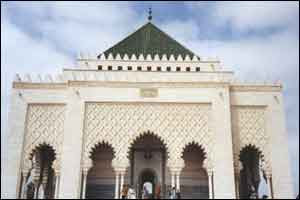
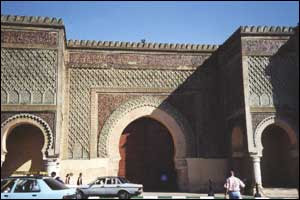

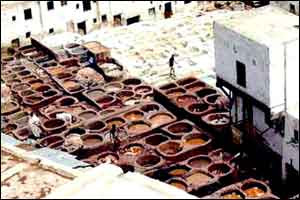

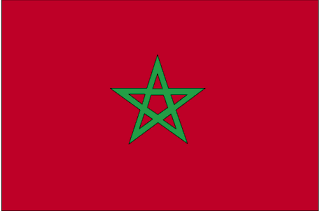
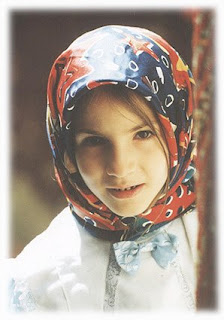



 week following the "Aid Al Mouloud" ; El Aouina festival (18 km southwest of Marrakesh), one month after the "Aid Al Mouloud".
week following the "Aid Al Mouloud" ; El Aouina festival (18 km southwest of Marrakesh), one month after the "Aid Al Mouloud".